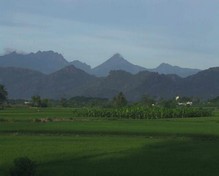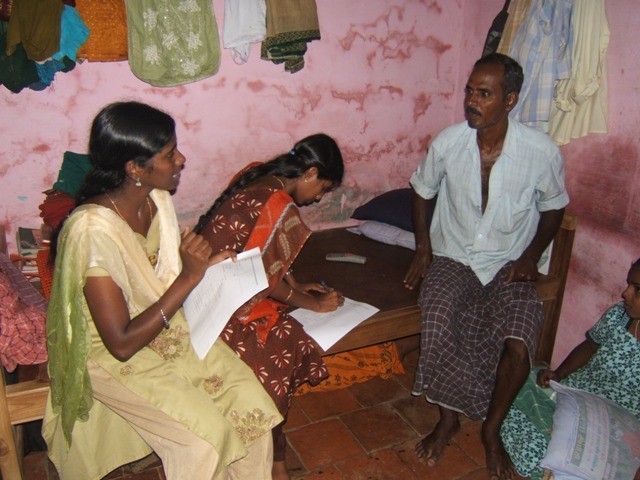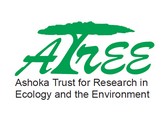Agasthya
A newsletter on the Natural History, Ecology
and Conservation of the Agasthyamalai region, Western Ghats, India.
Any and all opinions expressed in this newsletter are solely those of the author(s) and do not reflect the opinion of ATREE.
Editorial Team
Editor: T. Ganesh
Associate editor: Vivek Ramachandran
Editorial Review: R. Ganesan, M. Soubadra Devy
Design and presentation: Vivek Ramachandran
A S H O K A T R U S T F O R R E S E A R C H I N E C O L O G Y A N D T H E E N V I R O N M E N T
Interns interviewing a farmer
Photo: M. Mathivanan
Every year students from the Agricultural University at Killikulam near Tirunelveli visit Agathyamalai CCC at Singampatti to see and learn about our work on enriching the local biodiversity and conservation education among the kids of the farming community. This time we practiced a ‘see-do-learn’ type of orientation for the participants. Being undergraduate students of Agriculture, the participants were asked to interact with local farmers about farming practices in their village, use of fertilizer and pesticides, their thoughts on biodiversity in agricultural fields, organic farming and future plans. After a few days of knocking the doors of the houses in Singampatti, the students came up with a lot of first hand information. It seems that very few farmers in Singampatti village were practicing organic farming in their fields and they reserve the harvest solely for household use. It appears that farmers knew the links of organic farming to the health of their family. Yet, most farmers use conventional methods where they dump pesticides more so on chilly crops which experiences high levels of pest attacks, and also kills non target species such as frogs, snails, snakes, garden lizards and sometimes even mongoose and other birds. During the interaction with interns, farmers revealed that they knew about this, but were unable to take any precautions to prevent loss of non-target species. Some of the elderly members of the family especially ‘grannies’ said that fallow lands, fences with green plants, field bunds and canals were the untended gardens for greens and medicinal plants. Village elders say that these areas don't exist anymore and the present generation do not have time to source them.
Students felt that the knowledge associated with such natural resources are also vanishing from Singampatti. They requested the farmers to minimize the usage of chemical inputs, by practicing modern eco-friendly farming methods such as System of Rice Intensification (SRI). It was indeed revelation of sorts, on how in the name of increasing productivity ,we spoil our farmlands and its biodiversity.
Centre for Excellence in Conservation Science
Royal Enclave,Srirampura,Jakkur Post
Bangalore-560064
Telephone: 080-23635555 (EPABX)
Fax : 080- 23530070








